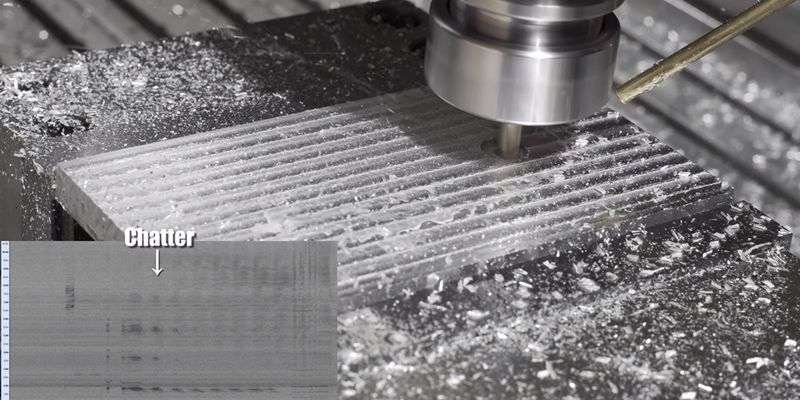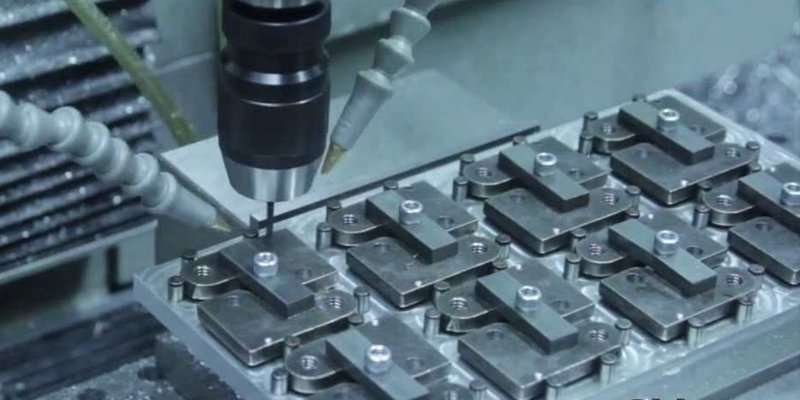Milling is a machining process that creates prototypes and parts according to a required design. It requires using a milling machine with a special component called milling tools or cutters to carry out the operation.
There are different types of milling cutters available. However, each cutter with its unique purpose while making it challenging to choose the right one. This article gives a detailed explanation of milling tools.
Table of Contents
ToggleWhat is a Milling Cutter?
A milling cutter is a milling machine tool that cuts materials from a workpiece in the form of chips to form a product according to a required design. Each milling tool is unique and comes in different designs, making it capable of milling workpieces of different types and designs.
To function, the cutter moves at the right axis while the workpiece sits linearly across it, milling the part surface along its circumference.

Components of a Milling Cutter
A milling cutter consists of various parts integrated to form a single piece and used on a milling machine. It comprises the following components:
- Shank: This component is cylindrical and fits into the milling machine’s spindle. Shanks’ function to ensure stability and proper alignment of the cutter during milling.
- Body: The body of the milling tool holds the cutting edges. It comes in square, cylindrical, or flute shapes and determines the milling cutter’s type, shape, and function.
- Cutting Edges: This component is responsible for the cutting action of the milling cutter. Cutting edges come in many configurations, which are responsible for the different types of milling cutters.
- Flutes: These are flute channels (helical or straight) that allow the escape of chips produced during the milling processes. They have unique designs which influence the rate of removal of the chips and cutting performance.
- Helix Angle: This is the angle formed by the cutter centerline and the cutting edge. Helix angle also plays a huge role in chip removal and cutting performance.
- Neck: The neck is present in some milling tools, especially those having a large diameter. It is between the shank and the body and makes it possible for the cutter to reach tight spaces during milling.
- Radius or Chamfer: This is an optional component in the intersection of the body and cutting edge. It is a rounded corner or a chamfer that reduces chipping and improves the cutting tools’ strength.
Types of Milling Cutters to Know
There are different types of milling cutters, each with unique designs and features, hence their different applications. The following are some of the most common.
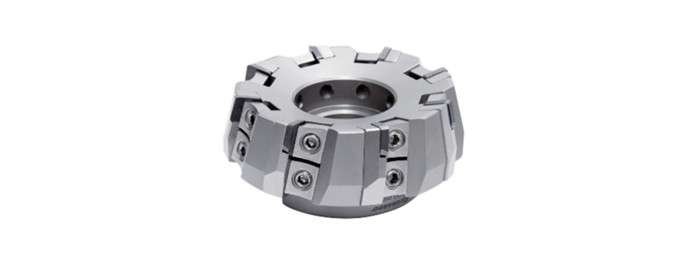
Face Milling Cutter
A face milling cutter has a cylindrical shape with straight or helical flutes distributed around the surface. They cut through a workpiece as the tool rotates counterclockwise. As a result, this increases the material evacuation rate, ensuring an excellent surface finish. This kind of milling machine tool is applicable in general face milling operations.

End Mill Cutter
An end mill cutter has a long cylindrical body with teeth on both sides and can cut through a workpiece axially. This milling tool comes in several forms, each with different sizes, features, and functions. Examples are V-bits, ball end mills, square end mills, and flash end mill cutters.
One common face mill vs end mill distinction is the latter’s suitability for creating complex patterns on small parts. However, they are not useful for heavy operations.

Side Milling Cutter
Side milling cutters have a flat surface with teeth around the circumference. They come in different sizes in terms of varying diameter and width, and the teeth have different arrangements on the circumference.
Furthermore, additional teeth can be on one side, enabling the cutter to perform unbalanced cuts effectively. As a result, side milling cutters are useful in situations where only the sides of the workpiece need to be machined.

Fly Cutter
A fly milling cutter is a single-point cutting tool that rotates laterally to a milling machine. Most fly cutters have a cylindrical center body that securely holds a single tool bit. This tool bit is commonly a standard left-hand turning tool. It is set at an angle between 30 to 60 degrees.
A fly cutter is applicable in producing flat finishes and smooth surfaces and can work on large workpieces due to its large cutting diameter.
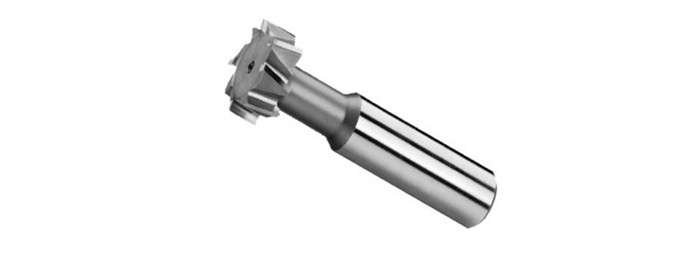
T Slot Milling Cutter
A t-slot milling cutter has a T shape with teeth around the circumference on a narrow shank. The shank may be plain or threaded, and some designs have a flattened part located at the shank’s center.
T-slot milling cutters, from their name, are applicable in creating t-slot tracks or grooves into a workpiece, allowing such workpieces to be held securely on fixtures and machine tables.
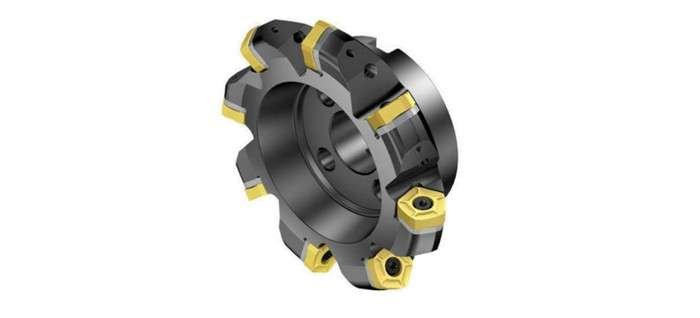
Inserted Tooth Milling Cutter
Unlike most milling tools, an inserted tooth milling cutter is not a single-piece tool. It has removable cutting teeth made from carbide or other hand material and a body made from steel.
In addition, we can install inserted tool milling cutter on different axes based on the part requirements. They are very versatile with replaceable teeth and can provide face/shoulder mill, counter, and slotting solutions.
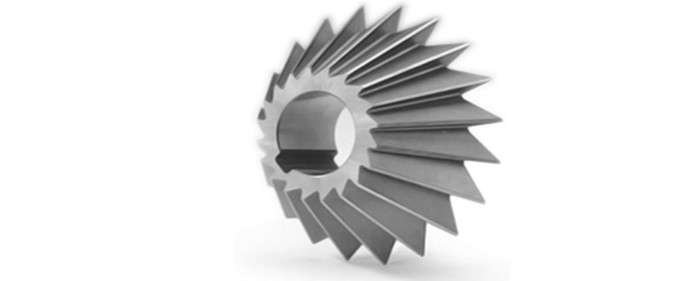
Angle Milling Cutter
The angle milling cutter has a flat design and the cutting edge at an angle to the rotation axis. There are two main types: single and double-angle milling cutters. Double-angle types have teeth on both sides. Consequently, they are more applicable for machining V-groove profiles. Generally, angle milling cutters are applicable in milling operations that require chamfers, bevels, etc., on a workpiece.

Plain Milling Cutter
Like many milling bits types, a plain milling cutter has helical or straight teeth on the disc or cylinder side. To function, the workpiece to be worked on should have a flat surface that runs parallel to the cutter’s axis. Generally, plain milling cutters are applicable in peripheral milling operations, facing, and slotting and are compatible with different materials.
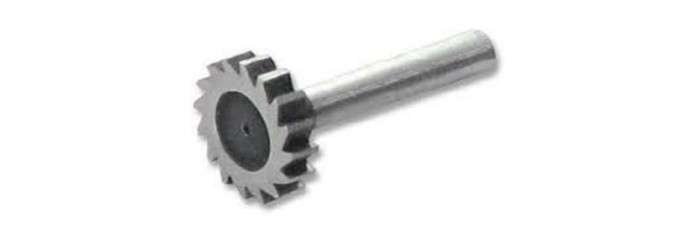
Woodruff Key Slot Milling Cutter
The woodruff key slot milling cutter is a round cutting tool with an aligned shank having straight or staggered teeth. The straight design removes material at a comparatively lower speed. Woodruff works have no side-cutting teeth like the t-slot milling tool. However, it works similarly, but it is applicable in cutting woodruff key slots into a workpiece.
Materials Used in Making Milling Tools
The material makeup of a milling machine tool can affect its functionality. Hence, there is a need to consider the material composition during mill tooling. Common materials used include:
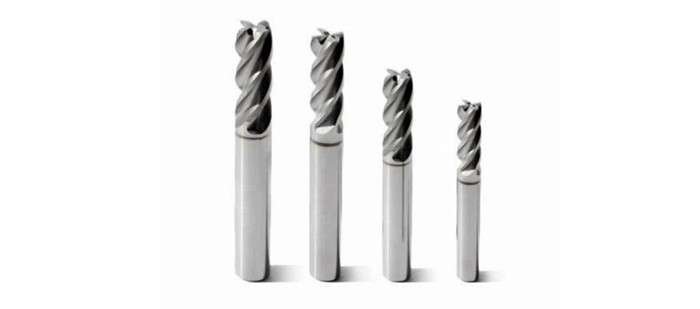
Carbon Tool Steel
Carbon steel used in making milling tools is an alloy of carbon and other elements such as molybdenum, tungsten, chromium, and vanadium. As a result of its material composition and combinations, there is improved performance of tools for milling machines at extreme temperatures.
Tool steel has different types, including shock-resistant, cold-work, hot-work, water-hardening, high-speed, and special purpose. Furthermore, when fabricating carbon tool steel milling machine tools, there is a need for proper heat treatment as this helps optimize the intrinsic properties of tool steel.
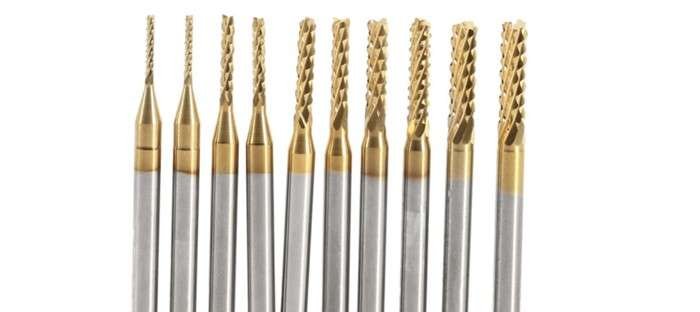
Carbides
Cemented carbide is a milling tool material of tungsten carbide and cobalt. Tungsten carbide has high hardness but is too brittle for single manufacturing tools for machines machine. In conjunction with cobalt, the resulting material, i.e., cemented carbide, is the most popular material for making end mills and side and slab cutters.
Cutters made using cemented carbides leave a smoother surface finish and are faster and better suited for hard materials. Furthermore, their excellent wear resistance property makes them ideal for mass production. However, cemented carbide cutters may produce chips during the cutting process. Consequently, controlling the cutting speed and using coolant as needed is important.
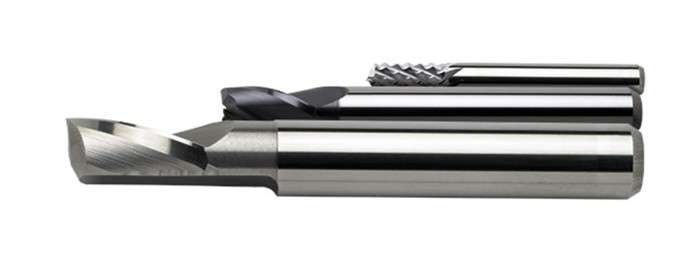
High-Speed Steel
High-speed steel contains carbon steel is the base metal alloyed with materials such as molybdenum and tungsten. Some also contain cobalt to improve the hardness property. High-speed steel is the main material for mill tooling production and is characterized by high durability and the ability to withstand heat. Their low friction level lets them cut through robust materials like stainless steel.
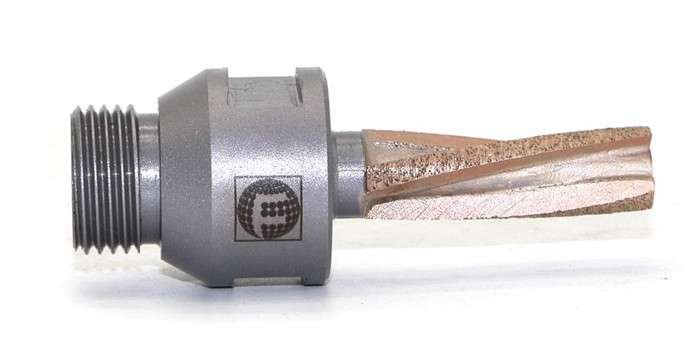
Diamond
Diamond is one of the hardest materials applicable in mill tooling. Such milling tools can mill several materials, especially very hard ones. Furthermore, diamond is very expensive. Hence, such tools are often embedded with diamond grains, with the size of the grains depending on the application. For example, you use smaller grains for hard metals, while larger grains are ideal for softer materials.
In addition, diamond milling tools have high thermal conductivity. As a result, this ensures efficient dissipation of heat produced during the milling process.
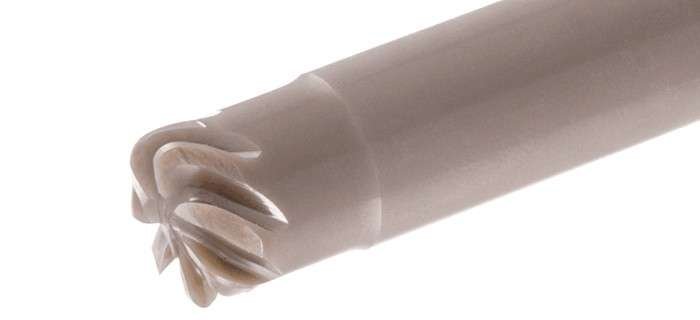
Ceramic
Ceramics is another material for making high-speed milling tools for casting iron and super-alloy parts. Unlike metal ones, ceramic milling tools are applicable at high temperatures. Furthermore, they are more stable and do not crack under extreme conditions.
Aluminum oxide-based ceramics are ideal for cutting metal parts due to the material’s low chemical reactivity. Amidst its different advantages, ceramics are challenging to shape and machine.
How to Choose the Right Milling Cutter for Machining Parts?
Using the right tool will determine the overall success of the milling operation. This will prevent damage and result in a higher-quality finish.
Tool and Workpiece Material
Tool selection depends greatly on its material type, which influences its characteristics, such as durability. For example, HSS milling cutters are cost-effective for milling materials such as non-ferrous metals and medium carbon steels. Furthermore, they offer good wear resistance and toughness. On the other hand, ceramic milling tools are hard, wear-resistant, and thermally stable. They are suitable for milling heat-resistant materials such as hardened steel.
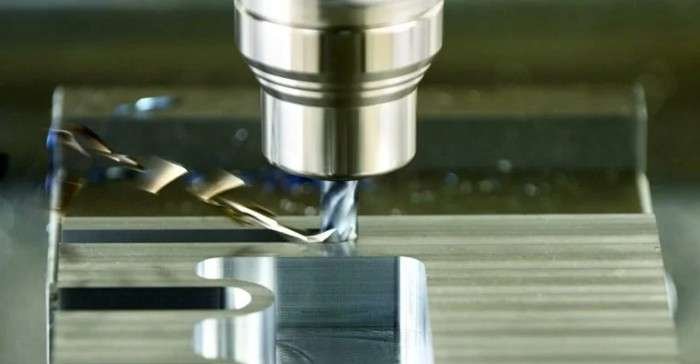
Depth of Cut (DOC)
The amount of material a milling tool removes when it passes through a part may affect your decision. The level of DOC varies with each cutting tool. It determines how far the tool dives into the surface. Experts recommend a lower value of DOC for a higher quality of cut. However, this may significantly increase machining time.
Number of Flutes
The flutes are the most essential part of the milling tool and are responsible for the cutting action. It is important to consider the number of flutes a milling cutter has before using it. Different milling cutters have subtypes with varying numbers of flutes. Some may have a single flute, while others may have as many as six. The more the flute, the more material removal per revolution.
Helix Angle
The helix angle of milling cutters determines the thermal performance and surface finish. When choosing a cutter, always have the helix angle in mind. The amount of material to be removed will determine the helix angle to use. Tools with lower helix angles are ideal when the material removal rate is high. However, they may compromise the final surface finish of the part.
How to Maintain and Extend Milling Cutter Life?
Proper machine tool maintenance is important to prolong the milling cutter’s life. As a result, you should take note of the following to ensure that your milling operations run smoothly.

Heat Control
The heat generated during milling operation is unavoidable and can lead to tool damage. For example, it can cause the expansion of the workpiece, which leads to errors. Furthermore, constant overheating and cooling can lead to rapid tool wear and damage.
Due to the effect of heat on milling tools, using proper coolant methods to manage heat generation is critical. Furthermore, some coolants prevent corrosion and reduce the friction between the tool’s surface and the workpiece.
Proper Tool Selection
The milling machine tool’s design can influence its ability to withstand the stress associated with cutting. Furthermore, it is important to use the right tool for a job. Using a tool with the wrong design can result in a cascade of problems that can compromise the quality of the product.
Use Special Coatings
Coatings can be a barrier against the milling tool’s friction, wear, and corrosion. Additionally, they prevent heat damage from reaching the tool’s structural component. Common examples include Titanium Nitride (TiN), which offers wear resistance and reduced friction.
Machining Variables
Manufacturers often specify the right cutting speed and feed for different milling tools. When there is a deviation from such machining variables, it can lead to damage to the milling tool. For example, using a milling tool at a faster cutting speed and feed than specified can increase the working temperature, leading to tool damage and shortened lifespan.
Read More: Machining Delrin
Conclusion
Milling cutters are versatile tools that have applications in manufacturing and finishing processes. These tools are available in different shapes and designs to meet business needs. This article has provided a detailed explanation of the types of milling cutters and factors to consider before using them.
Get CNC Milling Services at XinCheng Machining
At XinCheng Machining, we are proud to offer top-quality CNC machining services to meet your machining needs. Our 3, 4, and 5-axis CNC milling machines are equipped with precision cutting tools, allowing us to deliver high-quality and accurate parts for various industries.
If you have any questions about milling machine tools or CNC milling services, feel free to contact us to get more information.
FAQs
What are the features of a milling cutter?
A milling cutter consists of various parts integrated to form a single piece. The main elements of milling cutters are the body, periphery, and cutting edge.
What coatings are available for milling cutters?
The most common coatings you can use for your milling tool include Titanium Nitride (TiN), Titanium Carbonitride (TiCN), Titanium Aluminum Nitride (TiAlN), Aluminum Titanium Nitride (AlTiN), Diamond (CVD and PVD Diamond Coatings, Zirconium Nitride (ZrN), and Chromium Nitride (CrN).
What factors are responsible for heat generation during cutting operations?
For a cutting tool to perform its function, it must overcome the shear stress of the material. This process raises the temperature around the tool and the workpiece.

